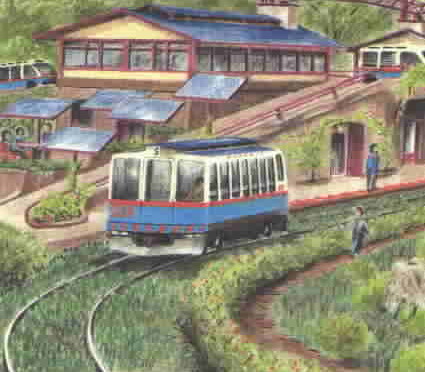Marin IJ April 11, 1999 by Dwayne Hunn
In February the IJ reported that Senator Boxer introduced legislation that would guarantee $2 billion of oil companies taxes be siphoned off to maintain public parks, expand urban parks and protect the country’s wildlife. It would be titled “Permanent Protection for America’s Resources 2000.” Ann Thomas of Marin Baylands immediately saw the most pressing need for this money, “We would love to acquire Canalways. It would be an absolute jewel for San Rafael to preserve that site.”
Because the nation’s people face more pressing needs and spending $2 billion differently could better help the environment, why not have a better title and spending program? Although comfortable Marin does not typify national needs, even here it is easy to spend on more humane and environmental needs..
In the last 20+ years Marin has:
- spent $32.3 million acquiring 13,107 acres of open space ($2,466 per acres)
- allowed only about 12% of its land to be open to development, much of what little remains rings the freeway
- consistently forced developers, thanks to myopic environmentalists, to downzone developments so that affordable units became fewer and harder to deliver
- grown .08% per year over the past 29 years, with about half of that growth due to people born into or inheriting homes in the county
- averaged a yearly growth of —-that modest increase is not the overpopulation causing Marin’s traffic congestion
- pressed to become the oldest median age county in California
- seen the median home cost rise to a Bunyonville number of $545,000
- gagged its freeway with solo caring northward workers unable to live in Marin
- leached more congestion pollutants into canals, farm fields, air and lungs due to its myopic land use policies
Where should conscientious leaders spend the $2 billion in oil revenues? In Marin, and elsewhere, take the oil money and put it where Californians need it more, into:
Þ transit (so freeways won’t continue sucking quality time out of people’s lives)
Þ logical land use (quit talking about smart land use and start building smart communities for regular people) along transit corridors
Þ delivering affordable workplace housing (state statistics show …..
Marin could have had several 100% + more affordable workplace housing units if myopic environmentalists HADN’T CONTINUOUSLY opposed physically reviving the train. Worse than that, these so-called environmentalist have strategically tried to kill the train’s future by drastically downzoning and forcing designs on communities (Novato Oaks, Hamilton Air Force Base, the areas surrounding the Civic Center, and now St. Vincent’s Silvera) that could have produced mixed used communities that provided train ridership, jobs and ridership for the environmentally beneficial train. How environmentally healthy it could have been to have compactly built along Marin and Sonoma’s train tracks a string of compact communities whose residents walk, work, live, shop and ride the train..
Since about 88% of Marin’s land is set aside in open space, agriculture or park land, perhaps it’s time $32.3 million of that $2 billion be shuttled into a Workplace Housing & Transit District rather than into acquiring St. Vincent’s and Canalways. Why not treat people as well as we have treated open space? Let some smart, truly environmental politician, who is concerned about the quality of peoples lives, call for using the expertise in the Open Space District to perform the same miracles for today’s crisis needs — workplace housing and transit.
Let St. Vincent’s be a affordable town oriented to give ridership to the train. Let Canalways be a mixed use project that provides workplace housing, perhaps a neighborhood school and a high tech campus for the Lucas company types who consistently leave this aging, too narrow minded and pricey county.
Would Senator Boxer and Congressman Miller re-title their legislation “Permanent Protection for America’s Resources and Working People 2000”? Would Marin’s leadership support such?
Dwayne Hunn, a public educator, knows Senator Boxer’s fax number is 415-956-6701 and her email is senator@boxer.senate.gov.
Above is unedited version run by Marin IJ on April 11, 1999.
Additional notes not published:
Since its formation in the 1970’s the Open Space District obtained contributions from Proposition 70 money, Marin Community Foundation, Assessment Districts, CSA {County Services Agreements.
Open Space district collected $32,316,931 and acquired 13,107 acres…
This amounts to $2,466 per acres spent in acquisition.
1995 largest acquisition year = 2,426 acres
1996 = 206 acres
1/97 – 6/98 285 acres (18 months)
Acquisition money is approaching bottom of barrel.
- Developers need a new strategy
- Collected wisdoms on why Marin housing is so expensive:
- Federal bay refuge simply is too much
- A ’golden opportunity’ for whom?
- Preservation proposal is elitist
- St Vincent’s is a rare opportunity
- ‘Smart’ planning needed in Marin
- I see San Rafael in 2020, and it works
- 10 questions for San Rafael
- Oh, God, have mercy on our failures
- …but, from where I sit, they’re part of the problem
- Downzoning can punish community
- With no train can we really clean…
- All aboard! The future…
- Marin, why not think ‘regional’?
- Apathy never fixes anything
- Marin power/a closer look
- Pedestrian Pockets II
- Interviewing Angelo Siracusa — Bay Area Council boss
- Pedestrian pockets
- Everyone wants transit?
- NEH, NBTMA, County letters on Hamilton Proposed Development
- Traffic reducing proposals
- Points in favor of Hamilton
- Building a better Marin
- Rail/Highway alternative best with development “pockets’
- East San Rafael’s needs
- Address our housing needs
- Visionary Leaders needed
- Innovations at Novato’s Skylark project


 see eye-to-eye on many proposed changes so within a year City Manager Ted Gaebler was gone.
see eye-to-eye on many proposed changes so within a year City Manager Ted Gaebler was gone.